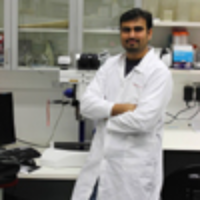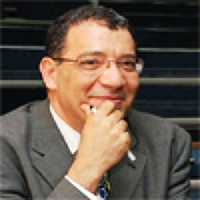The properties of nonlinear excitations and verification of validity of theory of energy transport in the protein molecules
Published on: 9th April, 2018
OCLC Number/Unique Identifier: 7906092414
Based on different properties of structure of helical protein molecules some theories of bio-energy transport along the molecular chains have been proposed and established, where the energy is released by hydrolysis of adenosine triphosphate (ATP). A brief survey of past researches on different models and theories of bio-energy, including Davydov’s, Brown et al’s, Schweitzer’s, Cruzeiro-Hansson’s, Forner‘s and Pang’s models were first stated in this paper. Subsequently we studied and reviewed mainly and systematically the properties and stability of the carriers (solitons) transporting the bio-energy at physiological temperature 300K in Pang’s and Davydov’s theories. However, these theoretical models including Davydov’s and Pang’s model were all established based on a periodic and uniform proteins, which are different from practically biological proteins molecules. Therefore, it is very necessary to inspect and verify the validity of the theory of bio-energy transport in really biological protein molecules. These problems were extensively studied by a lot of researchers and using different methods in past thirty years, a considerable number of research results were obtained. I here reviewed the situations and progresses of study on this problem, in which we reviewed the correctness of the theory of bio-energy transport including Davydov’s and Pang’s model and its investigated progresses under influences of structure nonuniformity and disorder, side groups and imported impurities of protein chains as well as the thermal perturbation and damping of medium arising from the biological temperature of the systems. The structure nonuniformity arises from the disorder distribution of sequence of masses of amino acid residues and side groups and imported impurities, which results in the changes and fluctuations of the spring constant, dipole-dipole interaction, exciton-phonon coupling constant, diagonal disorder or ground state energy and chain-chain interaction among the molecular channels in the dynamic equations in different models. The influences of structure nonuniformity, side groups and imported impurities as well as the thermal perturbation and damping of medium on the bio-energy transport in the proteins with single chain and three chains were studied by differently numerical simulation technique and methods containing the average Hamiltonian way of thermal perturbation, fourth-order Runge-Kutta method, Monte Carlo method, quantum perturbed way and thermodynamic and statistical method, and so on. In this review the numerical simulation results of bio-energy transport in uniform protein molecules, the influence of structure nonuniformity on the bio-energy transport, the effects of temperature of systems on the bio-energy transport and the simultaneous effects of structure nonuniformity, damping and thermal perturbation of proteins on the bio-energy transport in a single chains and helical molecules were included and studied, respectively. The results obtained from these studies and reviews represent that Davydov’s soliton is really unstable, but Pang’s soliton is stable at physiologic temperature 300K and underinfluences of structure nonuniformity or disorder, side groups, imported impurities and damping of medium, which is consistent with analytic results. Thus we can still conclude that the soliton in Pang’s model is exactly a carrier of the bio-energy transport, Pang’s theory is appropriate to helical protein molecules.
Au26-35: A Special Geometrical Structure of Au33 (D2) Cluster with Highly Occupied - 14 Pairs of Double-State Degeneracy
Published on: 30th December, 2022
In this article, an interesting phenomenon has described the geometries and vibrational frequency of the stable AuN clusters with N = 26 to 35. We have found nine out of ten clusters are having the very same C1 symmetry, except the cluster N = 33 (D2). The finite-differentiation method has been implemented within the density-functional tight-binding (DFTB) approach. The effects of the range of interatomic forces were calculated and the desired set of system eigenfrequencies (3N-6) are obtained by diagonalization of the symmetric positive semidefinite Hessian matrix. Mainly, we have observed the vibrational spectra and the range comes in between 2.04 and 347.32 cm−1 at ground state, ∆E = 0. Most significantly, all the clusters have revealed double-state degeneracy. The vibrational spectrum is strongly dependent upon the size, shape, and structure, at the same time, the stretching and the bending mode of the atoms with respect to the bond length plays a major role. We have compared some of our results, which have an excellent agreement, with the less availability of the experimental and the theoretical predictions.
Using Isomets as a Foundation, a Connection Factor between Nucleation and Atomic Physics
Published on: 10th June, 2024
The radioactive isomer was initially used to characterize persistent excited atomic states, much like molecular isomers, more than a century ago. Otto Hahn made the first atomic isomer discovery in 1921. Subsequently, it was gradually discovered that there are several kinds of nuclear isomers, such as spin isomer, K isomer, seniority isomer, and “shape and fission” isomer. Isomers are essential to the nucleosynthesis of astrophysical materials. High-accuracy nuclear reaction rate inputs are anticipated while carrying out a celestial nucleosynthesis net computation, even though a single reaction rate can have a significant impact on the whole astronomical evolutionary network. The isotopes are often considered to be in their initial state or to have levels populated in accordance with the thermal-equilibrium distribution of chances when computing nuclear synthesis rates. After all, certain isomers may have lives that reach millions of years or perhaps beyond the age of the cosmos. Thus, in an astrophysics event, such isomers might not be thermally equilibrium. Some atomic isomers—that is, astrometry—should be considered special isotopes since they are crucial to nucleosynthesis. Nuclear batteries can also be produced using nuclear isomers. Similar to the weak force, in certain specific cases such as isomer decays, the electromagnetic force could be crucial for nuclear changes. It is important to note that radioactive isomer states and radioactive ground states are not the same thing. Durable nuclear states of excitement provide insight into the nuclear framework and potential uses. Atomic and molecular changes become interconnected when the connection to the electrons in atoms is made possible by the existence of em decay routes from isomers. Notably renowned chemical decay process is inner conversion. Its inverted, nuclear excitement by free capture of electrons has been observed; however, it is debatable and needs more investigation. This study describes the connection connecting radioactive and molecular changes and discusses instances of manipulating nuclear moves related to isomers using external electromagnetic fields.




